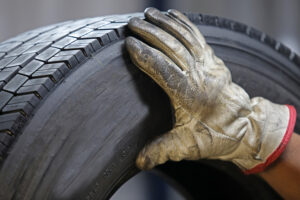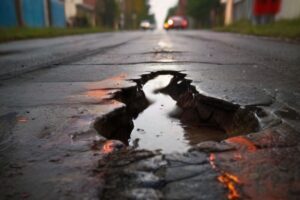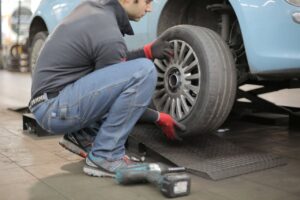How tyre blowouts can be responsible for multiple road accidents and deaths per year
When it comes to how your tyres can impact yours and others’ safety on the road, there are multiple factors that can come into play.
Blowouts caused by tyre damage are responsible for far more deaths than people think. However, the Department of Transport has seen a decrease in fatal accidents on the road since pre-pandemic 2019.
This doesn’t mean that faulty or old tyres aren’t still huge problem and have affected many of the estimated 1,558 deaths that occurred on our roads back in 2021 alone.
In comparison to around 12 years ago, they revealed that illegal, defective or under-inflated tyres were responsible for more than 1,210 road casualties in 2010. The figures vary year on year but it is clear tyres are still a cause of many deaths a year and have been an ongoing issue for quite some time.
Motorists have been urged to ensure their tyres are roadworthy to try and push this number back down again. But what causes these fatal accidents and what can motorists do to ensure their tyres are safe to drive on?
Tyre Blowouts
A tyre blowout is when your tyre rapidly deflates, potentially destabilising the vehicle. The best way to describe it is that when the tyre bursts under pressure it can sound like an explosion. A tyre blowout is not to be confused with a puncture which is much slower and often takes several hours or even a couple of days to materialise and make itself evident. But what causes a tyre blowout?
The most common reason for a blowout is the underinflation of the tyre. The low air pressure will cause the underinflated tyre to bulge out under the weight of the vehicle and the car bounces up and down on this as it moves. This then results in a degree of friction at a speed that causes heat and eventually weakening the tyre enough for it to burst.
Another reason you may experience a tyre blowout can be overloading your vehicle. This extra weight puts the chassis and the tyres under too much pressure, much more than they were designed to withstand. If your car is overloaded and also has underinflated tyres, there is an immediate increase in the risk of a tyre blowout and a serious fatal accident from happening.
How to handle a tyre blowout?
- The sudden loud noise of a tyre blowout can be startling but try to stay as calm as possible and slow to a stop with as much control as you can
- Maintain a firm grip on the wheel as the car will start to drag towards the tyre that has burst and will affect any steering.
- Always make sure you are safe when stopping the car both in terms of the location and how you exit the vehicle.
- Change the wheel or call a breakdown and recovery service for immediate assistance.
How to prevent a tyre blowout
Good tyre care and maintenance are key to minimising the risks of a tyre blowout. Checking your tyres visually on a weekly basis for any uneven wear, cuts, splits, cracks or other damage is vital for your and others’ safety. A bulge can be caused by kerbing your car or hitting other solid objects on the road. If you notice even the smallest bulge, replace the tyre immediately before it blows.
You can also make sure you rotate your tyres at set intervals. This is usually done every 6 months or so, even before a puncture occurs. Other things you can do to check your tyres are road-worthy include but are not limited to:
- Check your tyre inflation levels – although many cars these days have a TPMS (tyre pressure monitoring system) it is important to check they are not either under or over-inflated. An underinflation causes more of the tyre’s surface area to touch the road resulting in excessive flexing of the sidewall. This then increases friction and consequently heat, which can very quickly overheat.
- Make sure your tyres are not ageing, particularly on low-mileage cars and occasional use vehicles like trailers or caravans. Rubber deteriorates over time and can become damaged even if you haven’t driven on them much. A tyre may appear in good condition and be free from damage with decent tread, but if the tyre is over 6 years old, it could be coming towards the end of its life and need replacing to avoid any further damage or risk of an accident.
- Don’t drive faster than the sped tyre rating for your particular tyres. The speed rating can be found on the sidewall of the tyre and each speed symbol letter will have a maximum speed allowance which should not be exceeded.
If it is time to replace your tyres or you have experienced a blowout and need a replacement, etyres stocks a huge range of brands from Michelin to Bridgestone and more.




